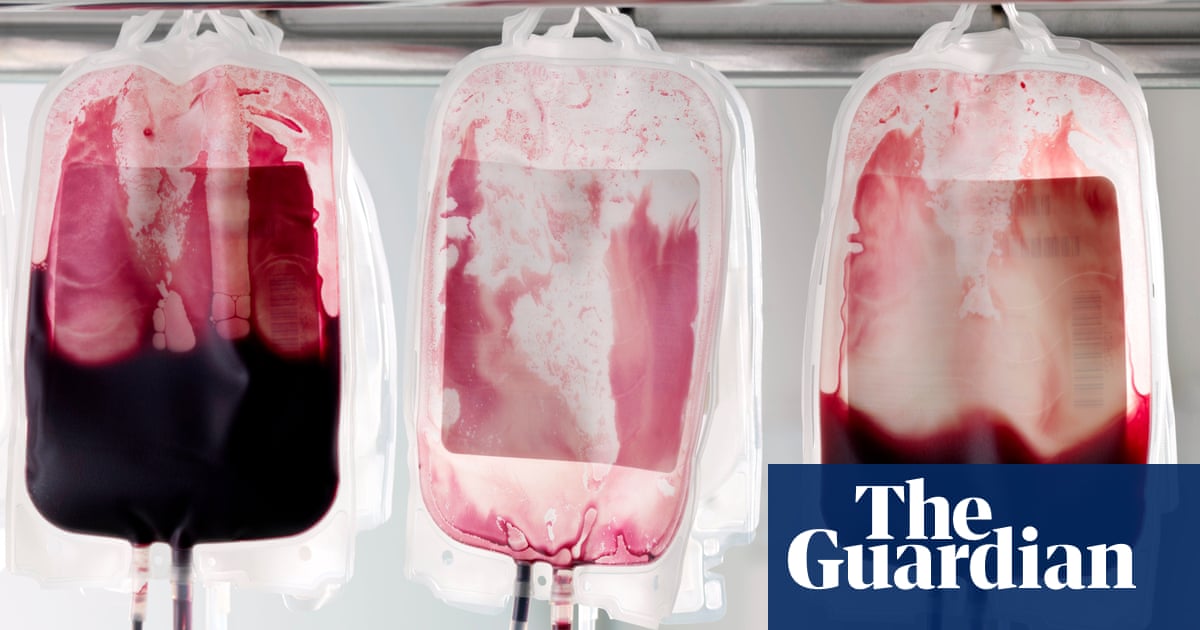On Monday, infected blood victims in the UK finally felt they had obtained a measure of justice and closure, nearly 50 years after the scandal began. Yet questions remain over the compensation scheme and whether criminal charges will be brought. Here is what happened in some other countries.
Australia
Infected blood is considered a little-recognised scandal in Australia. The government has estimated the number of victims at up to 8,000 while advocacy groups put the figure closer to 20,000.
In the early 1990s a trust was established to provide financial assistance to people with medically acquired HIV infection and Aids, which is not considered compensation. The trust was wound up in 2001, by which time 423 people had received payments totalling $20.16m (£11.6m). People infected with hepatitis C were not eligible for the payments, though some have settled independently with the Australian Red Cross.
A Senate inquiry was held in 2004 but the government never implemented its recommendation that it cover victims’ medical costs.
Canada
In the early 1980s, about 2,000 Canadians were infected with HIV from tainted blood products and about 30,000 were infected with hepatitis C.
In 1993 the Krever inquiry was launched. A landmark report was published in 1997, blaming the lack of a national blood policy in the country for a series of disastrous decisions.
A criminal investigation was brought in 1997 and police laid 32 criminal charges against senior scientists at Health Canada, the Canadian Red Cross Society and the US-based Armour Pharmaceutical Company. However, they were acquitted in 2007.
In 2001, the supreme court ruled that the Canadian Red Cross had been negligent. In 2005, the organisation pleaded guilty to distributing blood contaminated with HIV and hepatitis C and was fined $5,000 (£2,885).
The government offered compensation to Canadians infected with HIV from 1989, but it took years and several legal battles for those infected with hepatitis C to receive compensation, totalling billions of dollars.
China
Unique to China were the illicit blood centres in the mid-1990s that gathered blood from impoverished farmers in Henan and Anhui provinces, many of whom contracted Aids from unsanitary practices. Tainted blood is also believed to have found its way into mainland hospitals, infecting hundreds of patients in the late 90s.
The central government tightened safeguards for blood supply by abolishing for-profit blood donation schemes. However, even in 2004 authorities still sought to classify HIV infections as the result of drug use or prostitution in official records.
France
In France, an estimated 4,000 people, many of whom were haemophiliacs, were given blood infected with HIV in 1985.
The former prime minister Laurent Fabius and two of his ministers were charged with manslaughter. In 1999, Fabius and one minister were acquitted – the other minister was found guilty but freed. All three politicians were alleged to have delayed the introduction of a US blood-screening test in France until a rival French product was ready to go on the market.
The director of the National Blood Centre received a four-year prison sentence.
Ireland
The Lindsay tribunal was set up in Ireland in 1999 to investigate the infection of haemophiliacs with HIV and hepatitis C from contaminated blood products, some of which came from local donors as well as high-risk US prisoners.
The tribunal recommended a full care and compensation package for the nearly 2,000 people implicated and determined the National Haemophilia Centre had been slow to respond to the infection risk.
In 2007, it was reported that the state bill for compensating people infected by contaminated blood products exceeded €1bn (£853m).
Italy
A Rome court ordered the health ministry in June 2001 to pay damages to 351 people who contracted the HIV virus and hepatitis through blood transfusions, and their families.
The court said the ministry was too slow to introduce measures to prevent the virus being spread by donated blood, and did not establish proper checks on plasma.
Japan
In the 1980s, between 1,000 and 2,000 haemophilia patients in Japan contracted HIV through contaminated blood products that had not been heat-treated even though the technology was available.
In November 1995 a case was settled with compensation of $420,000 for each victim, $235,000 coming from the companies involved and the rest from the Japanese government.
Three former drug company executives were given prison terms in February 2000.
Renzō Matsushita, a former head of the ministry of health and welfare’s pharmaceutical affairs bureau, and two of his colleagues were found guilty of professional negligence resulting in death. In 2000, Matsushita was sentenced to two years in jail.
In 2001, a Tokyo court cleared the former top Aids expert of professional negligence over the scandal.
Portugal
More than 100 Portuguese haemophiliacs were infected with HIV after receiving transfusions of contaminated plasma from the public health service.
In 1995, Leonor Beleza, a former health minister, was indicted for her role in the scandal during her time in office during the 1980s. She avoided standing trial because the statute of limitations had expired.
US
In the US, haemophiliacs sought compensation through litigation against companies that provided blood products.
After years of legal wrangling, in 1997 Bayer and the other three makers agreed to pay $660mto settle cases on behalf of more than 6,000 haemophiliacs infected in the early 1980s, paying an estimated $100,000 to each infected haemophiliac. A bill was then signed giving two additional years to bring product liability suits against the manufacturers, allowing 75 people to file suits.

